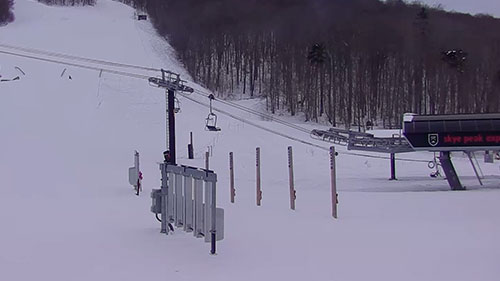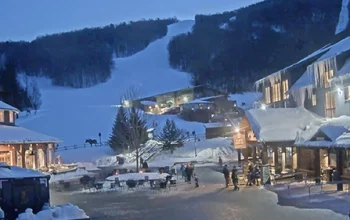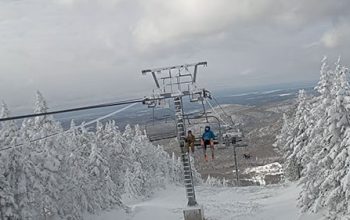Killington VT Webcams: Live Views of Vermont’s Premier Ski Resorts
Killington, Vermont, is home to some of the best ski resorts in the Northeast, and with Killington VT Webcams, you can check out real-time conditions before hitting the slopes. These live cameras provide up-to-the-minute views of Killington Resort, Pico Mountain, and surrounding trails, helping skiers and snowboarders stay informed about snow conditions, weather, and lift activity.
Popular webcams include the Killington Peak Cam, showcasing breathtaking summit views, the K-1 Base Cam, displaying lodge and lift activity, and the Bear Mountain Cam, offering a look at expert terrain. Whether you’re planning a trip or just want to admire the stunning winter scenery, these webcams provide a window into Vermont’s ski paradise.
For the latest live streams, visit the Killington VT Webcams and stay updated on the slopes before your next adventure!
The History of Killington
Killington, Vermont, has a rich history that stretches back thousands of years. Long before European settlers arrived, the Abenaki people lived in the area. They hunted, fished, and farmed the land. They followed the seasons, moving through the Green Mountains to find food and resources. The forests, rivers, and mountains provided everything they needed.
European Settlement Begins
In the 1600s, European explorers arrived in the region. They came from England and France, searching for new land and resources. Their arrival changed everything. As settlers moved in, conflicts with the Abenaki increased. Many indigenous people were forced to leave or adapt to a new way of life. Some joined colonial settlements, while others moved north to Canada.
By the mid-1700s, Vermont remained mostly unsettled. However, British colonists wanted to expand. In 1761, Governor Benning Wentworth of New Hampshire granted the town charter for Killington. Settlers built homes, farms, and small businesses. At first, the town was called Killington, but in the early 1800s, officials renamed it Sherburne. Later, in 1999, the town restored its original name.
Killington’s Economy Grows
Early settlers relied on logging, farming, and small industries. The forests provided wood for building and heating. Farmers grew crops and raised livestock. But Vermont’s cold winters made farming difficult. Many residents looked for other ways to make a living.
In the mid-20th century, everything changed. In 1958, Preston Leete Smith founded Killington Ski Resort. He saw the mountains as a perfect place for winter sports. The ski resort grew quickly, attracting visitors from all over. Soon, Killington became one of the biggest ski destinations in the Northeast.
Killington Today
Today, Killington thrives as a popular tourist destination. Skiing, snowboarding, hiking, and mountain biking bring visitors year-round. The town blends its rich history with modern attractions. While much has changed, the mountains remain a defining feature of the area.
Killington’s story is one of change and resilience. From the Abenaki people to European settlers and today’s ski culture, the town has evolved while keeping its natural beauty and adventurous spirit alive.
The Geography and Topography
Killington, Vermont, sits in the heart of the Green Mountains. It lies in Rutland County, about 15 miles east of Rutland City. The town covers 46 square miles, with forests, rivers, and mountains shaping the landscape.
Mountains and Elevation
Killington is best known for Killington Peak, the second-highest mountain in Vermont. It stands at 4,229 feet, offering stunning views of the surrounding area. Other nearby peaks include Pico Mountain and Shrewsbury Peak. These mountains provide excellent terrain for skiing, hiking, and other outdoor activities.
Rivers and Waterways
Several rivers and streams flow through Killington. The Ottauquechee River runs through the town, feeding into the larger Connecticut River. Many smaller brooks and creeks crisscross the landscape, creating natural beauty and wildlife habitats.
Forests and Wildlife
Much of Killington is covered in dense forests. Maple, birch, and pine trees dominate the landscape. In fall, the leaves turn brilliant shades of red, orange, and yellow. The forests also provide a home for deer, black bears, moose, and many bird species.
Climate and Weather
Killington has a humid continental climate. Winters bring heavy snowfall, making it perfect for skiing. Summers are mild, with cool nights and warm days. Rainfall is steady throughout the year, keeping the forests lush and green.
A Landscape Built for Adventure
Killington’s geography makes it a prime spot for outdoor recreation. Its mountains, rivers, and forests attract visitors year-round. Whether skiing in winter or hiking in summer, the landscape offers something for everyone.


